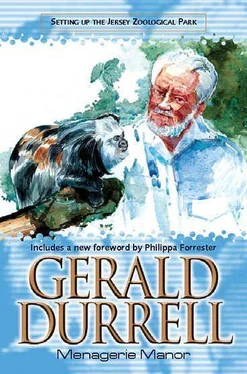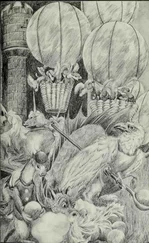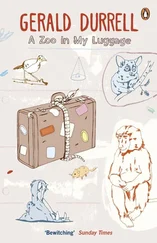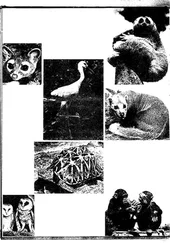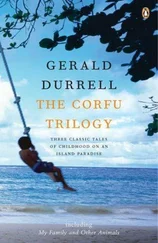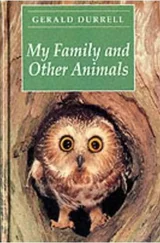The climate of New Zealand is not unlike that of Jersey. Previously, when I had seen tuataras at various zoos they had always been incarcerated in reptile houses in cages, the temperature of which fluctuated between seventy-five and eighty degrees. At the time this had not occurred to me as being a bad thing, but when I went to New Zealand and saw the tuataras in their wild state, I realized that the mistake the majority of European zoos had been making was to keep the tuatara as though it were a tropical reptile; this accounted for the fact that very few of these creatures kept in Europe had lived for any great length of time. Having obtained permission to have a pair, I was quite determined that their cage must be the best possible, and that I would keep them at temperatures as near to the ones to which they were accustomed as we could manage. So when I was alerted by the Wildlife Department of New Zealand that the tuataras would be sent to me very shortly, we started work on their housing. This, in fact, resembles a rather superior greenhouse: it is twenty-one feet long and eleven feet wide, with a glass roof. This roof is divided into windows, so that we can keep a constant current of air flowing through the cage and thus make sure that the temperature does not rise too much. A large quantity of earth and rock-work was then arranged and planted out, so as to resemble as closely as possible the natural habitat of the reptiles. We sank one or two pipes into the earth to act as burrows, should the tuataras not feel disposed to make their own, and then we waited for their arrival excitedly.
At last the great day came, and we went down to the airport to collect them. They were carefully packed in a wooden box, the air holes of which did not allow me to see if they had survived the journey, and I remained in a state of frustration all the way back from the airport to the zoo. There I could lay my hand on a screwdriver and remove the lid of the box, to see how our new arrivals had fared. As we removed the last screw and I prepared myself to lift the lid off, I uttered a brief prayer. I lifted off the lid, and there, gazing at me benignly from the depths of the container, was a pair of the most perfect tuataras I had ever beheld. In shape they resemble lizards, though anatomically they are so different that they occupy a family all their own. They have, in fact, come down from prehistoric times virtually unchanged, so if anything in the world can be dignified with the term prehistoric monster, the tuatara can.
They have enormous, lustrous dark eyes and a rather pleasant expression. Along the back is a fringe of triangular spines, white and soft, rather like the frill on a Christmas cake. This is more accentuated on the male than on the female. A similar row of spines decorates the tail, but these are hard and sharp, like the spikes on the tail of a crocodile. Their bodies are a sort of pale beige, mottled with sage green and pale yellow. They are, altogether, very handsome creatures with an extremely aristocratic mien.
Before releasing the tuataras into their new home, I wanted to be sure that the journey had not upset them too much, and that they would feed, so we left them in their travelling box overnight and put twelve dead baby rats in with them. The next day, to my delight, the box contained no trace of baby rats but a couple of rather portly and smug tuataras. It was obvious that a plane journey of a thousand miles was a mere nothing to creatures of such ancient lineage, and so we put them into their new quarters. Here, I am glad to say, they have settled down very well and have now grown so tame that they will feed from your hand. I hope that in the not too distant future we might make zoological history by breeding them, for as far as I know no zoo outside Australia and New Zealand has succeeded in hatching baby tuataras.
Now that the zoo was solvent and had acquired so many pain of threatened species, I felt the time had come to take the next big step forward. It was essential, if we were to do the work of saving threatened species which was my aim, for us to have outside financial assistance and to put the whole operation on an intelligent scientific footing. The answer, therefore, was for the zoo to cease being a limited company and to become a proper scientific trust.
On the face of it, this seems a fairly simple manoeuvre, but in practice it is infinitely more difficult. First you have to gather together a council of altruistic and intelligent people who believe in the aims of the trust, and then launch a public appeal for funds. I shall not go into all the wearisome details of this period, which can be of no interest to anyone but myself. Suffice it to say that I managed to assemble a council of hard-working and sympathetic people on the island who did not consider my aims so fantastic as to qualify me for a lunatic asylum, and with their help the Jersey Wildlife Preservation Trust came into being. We launched a public appeal for funds, and once more the people of Jersey came to my rescue, as they had in the past with calves, or tomatoes, or snails, or earwigs. This time they came forward with their cheque-books, and before long the trust had acquired sufficient money to take over the zoo.
This means that after twenty-two years of endeavour I shall have achieved one of the things that I most desired in the world—to help some of the animals that have given me so much pleasure and so much interest during my lifetime. I realize that the part we can play here is only a very small one, but if by our efforts we can prevent only a tiny proportion of threatened species from becoming extinct, and by our efforts interest more people in the urgent and necessary work of conservation, then our work will not have been in vain.
A MESSAGE FROM THE DURRELL WILDLIFE CONSERVATION TRUST
The menagerie Gerald Durrell brought to Les Augres Manor in 1959 subsequently enabled him to save endangered animals from all over the world. His lifetime crusade to preserve the rich diversity of animal life on our planet now includes programmes for the world’s rarest kestrel, pigeon, parrot, tortoise, fruit bat, pig and several of the world’s rarest monkeys.
This crusade to preserve endangered species did not end with Gerald Durrell’s death in 1995. His work goes on through the untiring efforts of the Durrell Wildlife Conservation Trust.
Over the years many readers of Gerald Durrell’s books have been so motivated by his experiences and vision that they have wanted to continue the story for themselves by supporting the work of his Trust. We hope that you will feel the same way today because through his books and life, Gerald Durrell set us all a challenge. Animals are the great voteless and voiceless majority,’ he wrote, ‘who can only survive with our help.’
Please don’t let your interest in conservation end when you turn this page. Write to us now and we’ll tell you how you can be part of our crusade to save animals from extinction.
FOR FURTHER INFORMATION, OR TO SEND A DONATION, WRITE TO:
Durrell Wildlife Conservation Trust Les Augres Manor Jersey, English Channel Islands, JE3 5BP UK
www.durrellwildlife.org
